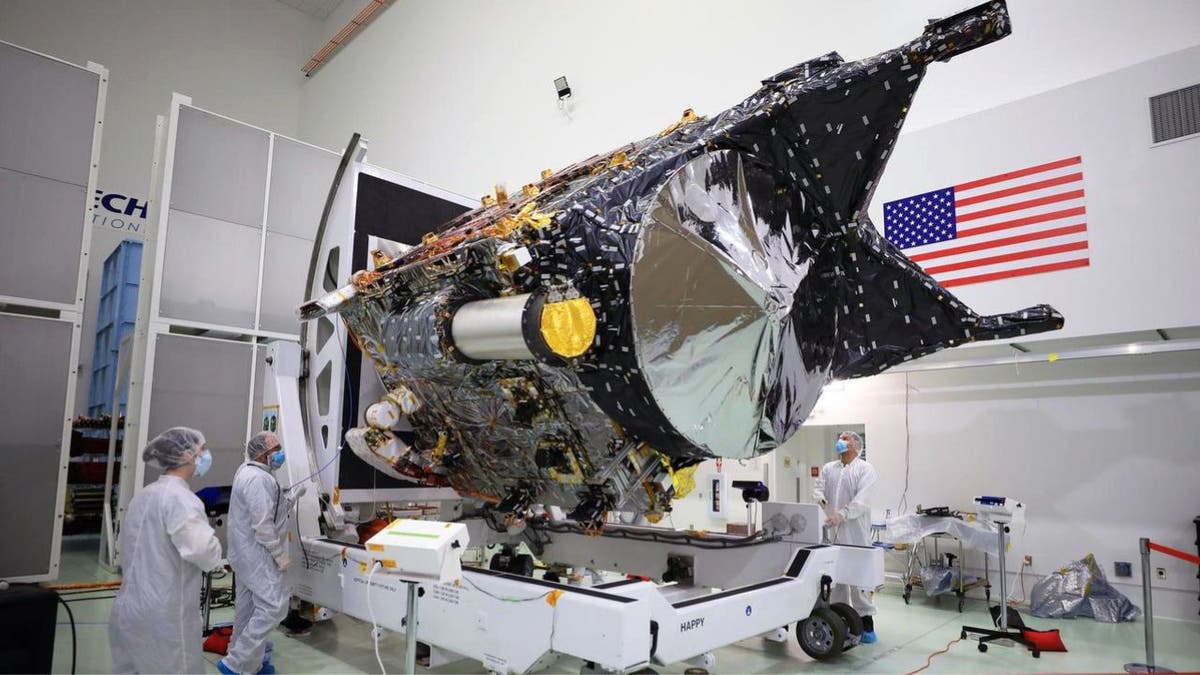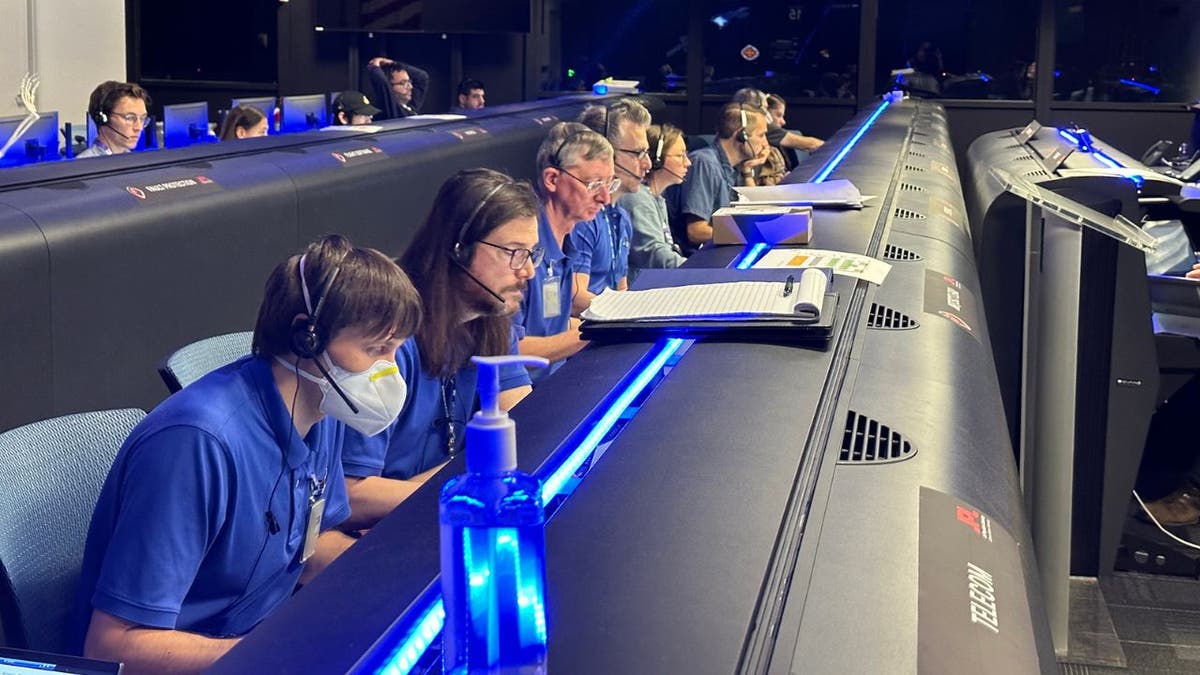NASA’s Perseverance rover on Mars captures dust devil
The Mars rover Perseverance captured a dust devil moving across the rim of a crater. Credit: NASA
To infinity and beyond?
A NASA spacecraft has beamed a near-infrared laser nearly 10 million miles into space breaking new ground for the agency.
The laser, which is encoded with test data, was fired from NASA’s Psyche spacecraft and then sent back to Hale Telescope at Caltech’s Palomar Observatory in San Diego County, California, the agency said.
The test data was transmitted about 40 times farther than the distance between the moon and the earth, which NASA says is about 238,900 miles. The SpaceX Starship, for context, traveled around 93 miles into space last week.

NASA’s Psyche spacecraft is shown in a clean room at the Astrotech Space Operations facility near the agency’s Kennedy Space Center in Florida. DSOC’s gold-capped flight laser transceiver can be seen, near center, attached to the spacecraft. (NASA/Ben Smegelsky)
NASA PLANS TO BUILD A SUBDIVISION OF HOMES ON THE MOON, AND IT MAY BE SOONER THAN YOU THINK
The successful laser transmission, which NASA describes as a "first light," took place in the early hours of Nov. 14, when Psyche’s laser transceiver — a cutting-edge instrument capable of sending and receiving near-infrared signals — locked onto a powerful uplink laser sent from a telescope at NASA’s Jet Propulsion Laboratory (JPL) near Wrightwood in California.
The uplink laser helped the flight transceiver aim its downlink laser back to Caltech’s Palomar Observatory. Automated systems on the transceiver and ground stations then fine-tune its pointing.
The first flight is a significant steppingstone toward increasing the amount of data that can be transmitted throughout the solar system, NASA said.
NASA CAPTURES STUNNING PHOTOS OF SUN'S RAYS OVER EARTH: SEE THE JAW-DROPPING IMAGES
The space agency says it has long been able to communicate with spacecraft using radio frequencies, but has never been able to send information using lasers from that far into space.
NASA’s Psyche spacecraft was launched in October on SpaceX Falcon Heavy rocket and is on a larger mission to explore a metal-rich asteroid that may shed light on earth’s formation. The mission is part of NASA’s Deep Space Optical Communications (DSOC) experiment.

A SpaceX Falcon Heavy rocket with the Psyche spacecraft onboard launches at NASA’s Kennedy Space Center in Florida in October. (NASA/Aubrey Gemignani)
"Achieving first light is one of many critical DSOC milestones in the coming months, paving the way toward higher-data-rate communications capable of sending scientific information, high-definition imagery, and streaming video in support of humanity’s next giant leap: sending humans to Mars," said Trudy Kortes, NASA’s director of Technology Demonstrations.
Test data was also sent simultaneously via the uplink and downlink lasers, a procedure known as "closing the link" that is a primary objective for the experiment.
The DSOC experiment aims to demonstrate data transmission rates 10 to 100 times greater than the state-of-the-art radio frequency systems used by spacecraft today.

The flight laser transceiver operations team for NASA’s Deep Space Optical Communications (DSOC) mission at JPL on Nov. 14. (NASA/JPL-Caltech)
CLICK HERE TO GET THE FOX NEWS APP
Both radio and near-infrared laser communications utilize electromagnetic waves to transmit data, but near-infrared light packs the data into significantly tighter waves, enabling ground stations to receive more data, the agency said.
This will help future human and robotic exploration missions and support higher-resolution science instruments, NASA said.
The new comes just weeks after NASA released X-ray images of a dead collapsed star that looks eerily like the bones of a cosmic hand.

